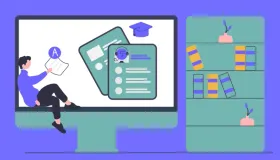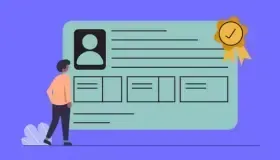Some People Get Into Debt: How to Answer
In IELTS Writing Task 2, following general writing guidelines is crucial for achieving a high score. Start by clearly understanding the essay topic and identifying key aspects to address in your response. Structure your essay with an introduction that introduces the topic and your position, followed by body paragraphs that present coherent arguments supported by relevant examples or evidence.
Ensure each paragraph focuses on a single main idea and is logically connected to the overall argument. Cohesion and coherence are key—use linking words and phrases to connect ideas smoothly.
Finally, conclude by summarising your main points and restating your opinion if applicable, demonstrating a clear and well-rounded response to the essay prompt.
The topic will look like this:
Here's how you can structure and answer your essay on the topic:
Introduction:
- Paraphrase the topic: Begin by paraphrasing the essay question to introduce the topic.
- Thesis statement: Clearly state your stance and preview the reasons and solutions you will discuss in the body paragraphs.
Body Paragraphs:
- Reasons for the behaviour:
- Identify factors: Discuss various reasons individuals fall into debt by buying unnecessary items. This could include societal pressures, consumerism, lack of financial literacy, and impulsive spending habits.
- Provide explanation: Each reason should be elaborated with relevant details and examples, if necessary, to support your argument.
- Actions to prevent the problem:
- Educational initiatives: Discuss the importance of financial education at early stages of life and in schools to impart responsible spending habits.
- Budgeting and planning: Highlight the significance of budgeting techniques and financial planning to avoid overspending.
- Cultural shift: Suggest ways in which society can promote mindful consumption and discourage unnecessary spending through media, advertising, and social norms.
Conclusion:
- Summarise key points: Briefly recap the reasons individuals fall into debt due to unnecessary purchases and the proposed actions to prevent this issue.
- Call to action or prediction: Conclude with a call to action or a prediction about the potential impact of implementing the suggested solutions. For example, "By fostering a culture of financial responsibility and advocating for practical measures, individuals can make informed decisions that lead to financial stability and well-being."
Read more about IELTS Writing 6 – Tips And Tricks To Improve Beyond Band 6 in IELTS.
Some People Get Into Debt: Sample Essay
Let's explore essay samples for Some People Get Into Debt: Sample Essay.
Introduction:
In today's consumer-driven world, many individuals find themselves trapped in financial difficulties as a result of purchasing items they neither need nor can afford. This essay will examine the underlying reasons for this behaviour and propose effective measures to mitigate its prevalence.
Body:
People often fall into debt due to societal pressures that promote materialism through advertisements and social media. This encourages individuals to maintain lifestyles beyond their financial means. Additionally, a lack of financial literacy contributes significantly, as many people underestimate the long-term impact of their spending habits. Moreover, impulsive buying behaviours driven by instant gratification contribute to accumulating debt. The ease of access to credit cards and instalment plans further encourages overspending, as consumers may overlook the actual cost until it becomes financially burdensome.
To tackle this problem, education is crucial. Introducing financial management courses in schools can equip young adults with essential skills for making informed financial decisions. Promoting mindful consumption through media and community initiatives can shift societal norms around spending habits. Practical measures such as budgeting, expense tracking, and seeking financial advice empower individuals to manage their finances responsibly. By raising awareness about the consequences of overspending and advocating for responsible financial behaviour, society can reduce unnecessary debt.
Conclusion:
In conclusion, the phenomenon of accumulating debt through unnecessary purchases stems from societal pressures, lack of financial knowledge, and impulsive spending behaviours. However, through education, cultural shifts, and personal financial management strategies, individuals can avoid falling into financial distress. By adopting these measures, individuals can cultivate healthier spending habits, leading to greater financial stability and well-being.
Read more about IELTS Connectors for Task 1 & Task 2: Linking Words for IELTS Writing 2024






